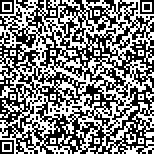下载中心
优秀审稿专家
优秀论文
相关链接
摘要

林火发生后,开展森林生态系统烈度信息的初始评估,能够为灾后生态修复管理措施的快速实施提供定量依据。为了改善传统林火烈度评估模型的时效性,本研究利用历史过火区域的实地调查数据,构建基于迁移学习的烈度评估模型,并将其应用于2020年3月30日发生的西昌泸山森林大火烈度初始评估研究中。研究结果表明:迁移学习算法能够将源区域和目标区域的遥感影像光谱转换为多个新的特征变量,在这些新特征变量构成的投影空间中,源区域和目标区域样本具有相似的特征分布。在此基础上,基于源区域历史实地调查数据构建的烈度评估模型,能够迁移应用于目标区域的烈度评估。在本研究林火烈度的初始评估中,基于迁移学习的烈度评估模型精度较高,总体精度为71.20%,Kappa系数为0.64。与该模型对比,未进行迁移学习的支持向量回归模型精度较低,其总体精度为58.00%,Kappa系数为0.48。同时,基于dNDVI、dLST和dNBR指数的经验回归模型精度最低,其总体精度分别为:20.80%、34.8%和24.80%,Kappa系数分别为:0.01、0.19和0.06。本研究可为林火灾后管理措施的快速响应,提供一种新的思路和参考。
In recent years, forest fires occur frequently around the world, which severely damage the structure and function of the forest ecosystem. The initial assessment of burn severity could provide a quantitative basis for rapid implementations of post-fire restoration measures. In the last decades, remote sensing-based models have become an appropriate choice to assess burn severity, which generally require a certain amount of field survey data. However, this requirement could not be sufficiently satisfied in the first moments after fire, since the field survey work would cost a substantial amount of time and labor. The absence of field survey data in the initial assessment of burn severity would largely limit the efficient application of remote sensing technologies. In this study, a transfer learning algorithm (i.e., SSTCA, semi-supervised Transfer Component Analysis) was employed to propose an initial assessment model of burn severity to improve the time-efficiency of traditional remote sensing-based models. Firstly, the SSTCA algorithm was applied to project a series of new features from original spectral features of remotely sensed data. Based on these projected features, a Support Vector Regression (SVR) model was then trained using historical field survey data from source areas (i.e., Bear fire on June 27, 2002 and Mule fire on July 11, 2002). Thereafter, the SSTCA-SVR model was transferred to the initial assessment of burn severity of a target area (i.e., Lushan fire on March 30, 2020). Finally, the performance of this proposed model was quantitatively compared with those of some traditional models (i.e., dNDVI-, dLST-, dNBR-, and SVR-based models). Results showed that original spectral features of remote sensing images over source and target areas were quite different. After the SSTCA projection, projected features of source and target samples have a similar distribution pattern in the new features-based space. Meanwhile, in the initial assessment of burn severity, dNDVI- and dNBR-based models have overestimated burn severity levels with low accuracies (i.e., overall accuracy was from 20.80% to 24.80% and Kappa value was between 0.01 and 0.06). Compared with them, the dLST-based model has a better performance with an overall accuracy of 34.80% and a Kappa value of 0.19. Although SVR-based model has shown a promising performance with an overall accuracy of 58.00% and a Kappa value of 0.48, this model has overestimated the burn severity levels in some regions of burned areas. The assessment results of burn severity levels using SSTCA-SVR model has the best performance with an overall accuracy of 71.20% and a Kappa value of 0.64. We conclude that the application of a transferring learning algorithm would be helpful for building an assessment model of burn severity with a good transferring ability. In this way, more accurate results could be obtained in the initial assessment of burn severity, and the response of post-fire management might be accelerated after forest fires.

